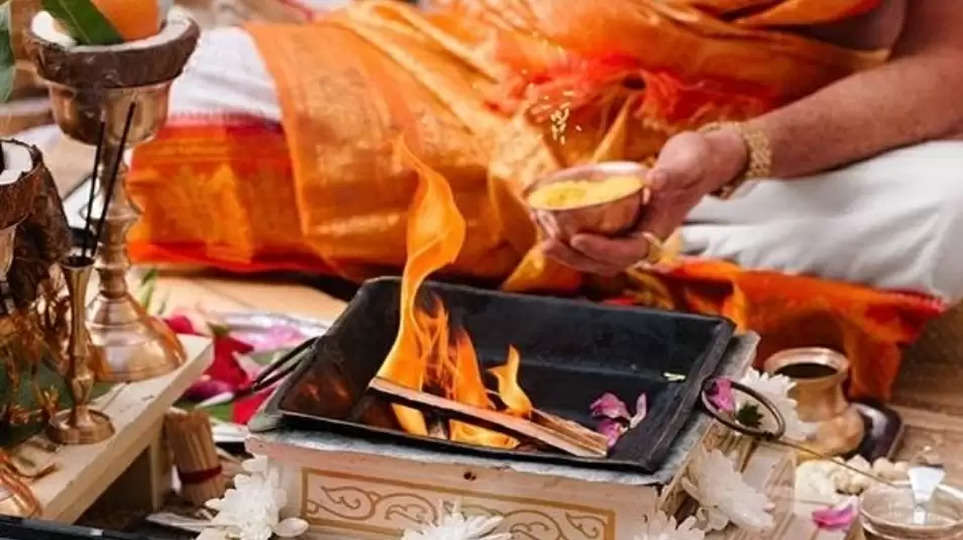A Comprehensive Guide to North Indian Weddings: Traditions, Attire, and Rituals
North Indian weddings are renowned for their grandeur, vibrancy, and deep-rooted traditions. These celebrations that are often held for several days, are a blend of cultural rituals, elaborate ceremonies, and festive gatherings. These celebrations are more than just a union of two individuals, they are a confluence of culture, religion, and family values. From the intricate bridal attire to the detailed wedding rituals, every aspect of a North Indian wedding reflects a rich cultural heritage and a deep sense of family values. This guide aims to decode the essence of North Indian weddings, offering insights into the rituals, attire, and procedures that make these weddings a truly spectacular affair.
Sun, 9 Feb 2025

Starting the Journey with a Matrimonial Ad
In North Indian culture, the journey towards marriage often begins with a matrimonial advertisement. A well-crafted matrimonial ad is crucial as it lays the foundation for finding a suitable match, reflecting the family's values, expectations, and aspirations. These ads typically highlight key details such as the educational background, family values, and personal preferences of the bride or groom, serving as an initial introduction to potential suitors and their families. The matrimonial ad is not just a practical tool but also a reflection of cultural norms, guiding the search for a compatible partner while respecting traditional practices.
North Indian weddings are a grand celebration of love, culture, and tradition. They are known for their vibrant festivities, elaborate rituals, and stunning attire. If you’re attending or planning a North Indian wedding, understanding its customs can make the experience even more meaningful. This guide explores the key traditions, attire, and rituals that make these weddings so special.
1. Pre-Wedding Rituals
Roka and Engagement
The wedding journey begins with the Roka ceremony, where both families formally agree to the union. This is followed by an engagement ceremony, where the bride and groom exchange rings.
Haldi Ceremony
A sacred turmeric paste is applied to the bride and groom to purify and bless them before marriage. It also gives their skin a natural glow for the big day.
Mehendi Ceremony
During this event, the bride’s hands and feet are adorned with intricate henna designs, symbolizing joy, love, and prosperity. Female friends and family members often join in the celebration.
Sangeet Night
A fun-filled evening of music and dance, the Sangeet brings both families together to celebrate the upcoming wedding with performances, laughter, and joy.
2. Wedding Day Rituals
Baraat (Groom’s Procession)
The groom arrives in a grand procession, often on a decorated horse or in a luxurious car, accompanied by music, dancing, and celebrations by his family and friends.
Jaimala (Exchange of Garlands)
The bride and groom exchange floral garlands, signifying mutual respect and acceptance of each other.
Kanyadaan and Mangal Pheras
The bride’s father gives her away in a sacred ritual called Kanyadaan. The couple then takes seven rounds (pheras) around the sacred fire, each representing vows for a lifelong commitment.
Sindoor and Mangalsutra
The groom applies sindoor (vermilion) on the bride’s forehead and ties a mangalsutra (sacred necklace) around her neck, marking her as a married woman.
3. Post-Wedding Rituals
Vidaai (Bride’s Farewell)
The bride bids an emotional farewell to her family and leaves for her new home with her husband.
Griha Pravesh
Upon arrival at the groom’s house, the bride is welcomed with traditional customs, including stepping into a tray of rice, symbolizing prosperity.
Reception
A grand celebration hosted by the groom’s family to introduce the newlyweds to extended family and friends, featuring music, food, and festivities.
4. Traditional Attire
For the Bride
Brides wear Lehenga (embroidered skirt and blouse) or Saree in rich colors like red, maroon, or pink, symbolizing love and prosperity.
Heavy gold or Kundan jewelry, including a maang tikka (headpiece), nath (nose ring), and chooda (red and white bangles), complement the bridal look.
For the Groom
Grooms wear Sherwani (embroidered long coat) with a safa (turban) and kalgi (ornament).
Some opt for a traditional Achkan or Bandhgala suit with a stole (dupatta).
Final Thoughts
North Indian weddings are a beautiful blend of tradition, festivity, and emotions. From pre-wedding celebrations to post-wedding customs, each ritual holds deep cultural significance. Whether you are a guest or a part of the wedding, embracing these traditions ensures a memorable and joyful experience.
Tags
Around the web
